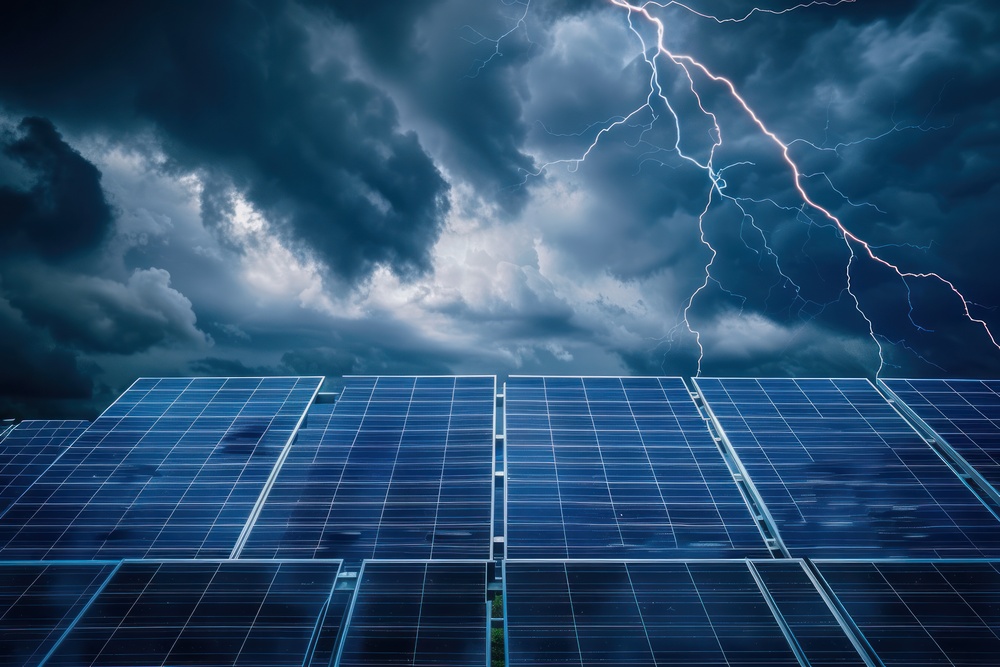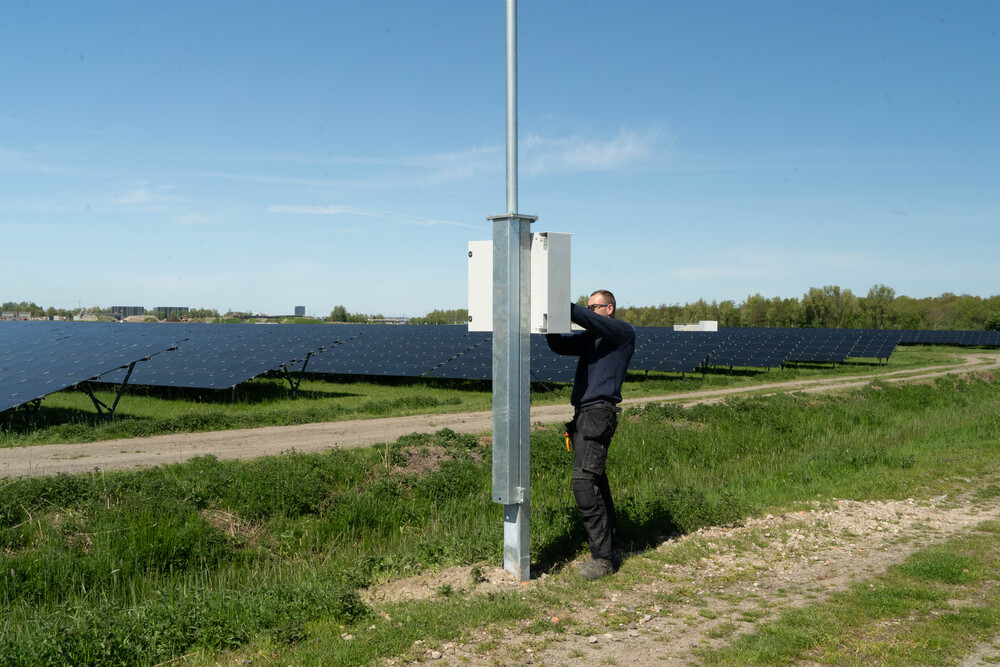
More and more roofs, pastures and houses are being filled with solar panels. Good for the energy transition, but it also brings new risks. Thus solar farm security an important topic of conversation these days. But a question that also comes up regularly is: what about lightning and solar panels? Do solar panels create an increased risk of lightning strikes? And is it something to worry about as a solar farm operator?
There are about 200,000 lightning discharges over the Netherlands every year. [1] Some of these discharges strike. Did you know that the temperature of lightning can reach as high as 30,000 degrees Celsius? Not surprisingly, a lightning strike can cause major damage, then. What does this mean for solar parks?
Some people think solar panels attract lightning. This is not true. The idea that metal components are automatically more likely to attract lightning is not true. Lightning looks for the shortest path to earth via a path with the least resistance, and this has to do with height and location, not material.
Nevertheless, solar panels, with their large surface area and prominent placement on roofs or in open fields, are vulnerable to strikes. Especially if the installation is located in an area where lightning is more likely to strike, such as mountains, plains with few buildings or tropical regions. Lightning and solar panels can then be a dangerous combination if no protection measures are taken.
Solar panels therefore do not attract lightning, but it is possible for a solar farm to be struck by lightning. This need not always have consequences, but if the panels do not have proper lightning protection, it can lead to:
A lot of voltage can be released during an impact. When this voltage exceeds what the equipment can handle, the consequences are often irreversible. Inverters and cabling are especially vulnerable.
The tricky thing is that the damage from a lightning strike is often invisible. Therefore, it is important to have the panels properly inspected after a strike.
To prevent damage from lightning strikes, the metal mounting system and any metal frames should be earthed. In this way, damage caused by currents that may pass through the conductive parts is prevented.
In addition, a lightning arrestor is installed in many cases. Also known as surge protection, this is designed to prevent damage to solar panels and associated equipment in the event of a lightning strike. It captures the current and conducts it safely to earth. Earthing and surge protection are not the same thing, which is what some people think. Surge protection only protects against voltage spikes. Both are indispensable in the discussion around lightning and solar panels.
If the protection is faulty, or has been struck by lightning before, the risk of consequential damage may increase. Even a relatively light strike can then spread to sensitive components. Worn connections can go unnoticed for months, until a sudden failure occurs. This is why inspection and prevention are so important.

Now you wonder if your solar farm is at risk. The larger the solar farm, the more complex the electrical system. And the greater the financial interest in case of failure. Larger parks often have more transformers, distribution boxes and kilometres of cabling. These are all potential weak links in the event of a lightning strike. The larger the park, the more important the measures for lightning strikes and controls in case of strike.
With the right lightning protection, you can prevent damage to your solar farm. But regular inspections are also essential. Besides protection against lightning, it is at least as important to secure your solar farm against theft and sabotage. We are happy to think along with you about smart combinations of camera surveillance, detection systems and control room monitoring.
No, solar panels by themselves do not attract lightning. However, they can be more susceptible to impact because of their height or location. Some locations are simply more susceptible to lightning.
Yes, lightning strikes can damage a solar farm. Without proper protection, a strike can lead to overvoltage, short circuits and damage to inverters and cables. The damage is often not visible from the outside.
Not all solar parks are equally susceptible to lightning strikes. Nevertheless, installing lightning protection is a good choice for preventing damage. Especially for solar parks of large areas and in open fields.
Sources:
[1] Thunder, thunder and lightning - Fire brigade. (2025, June 16). Fire service. https://www.brandweer.nl/onderwerpen/onweer-donder-en-bliksem/
How does lightning impact solar farms? (s.d.). https://www.clir.eco/blog/lightning-solar-farms

© Soldefence 2025 | Online realisation: 050 Marketing